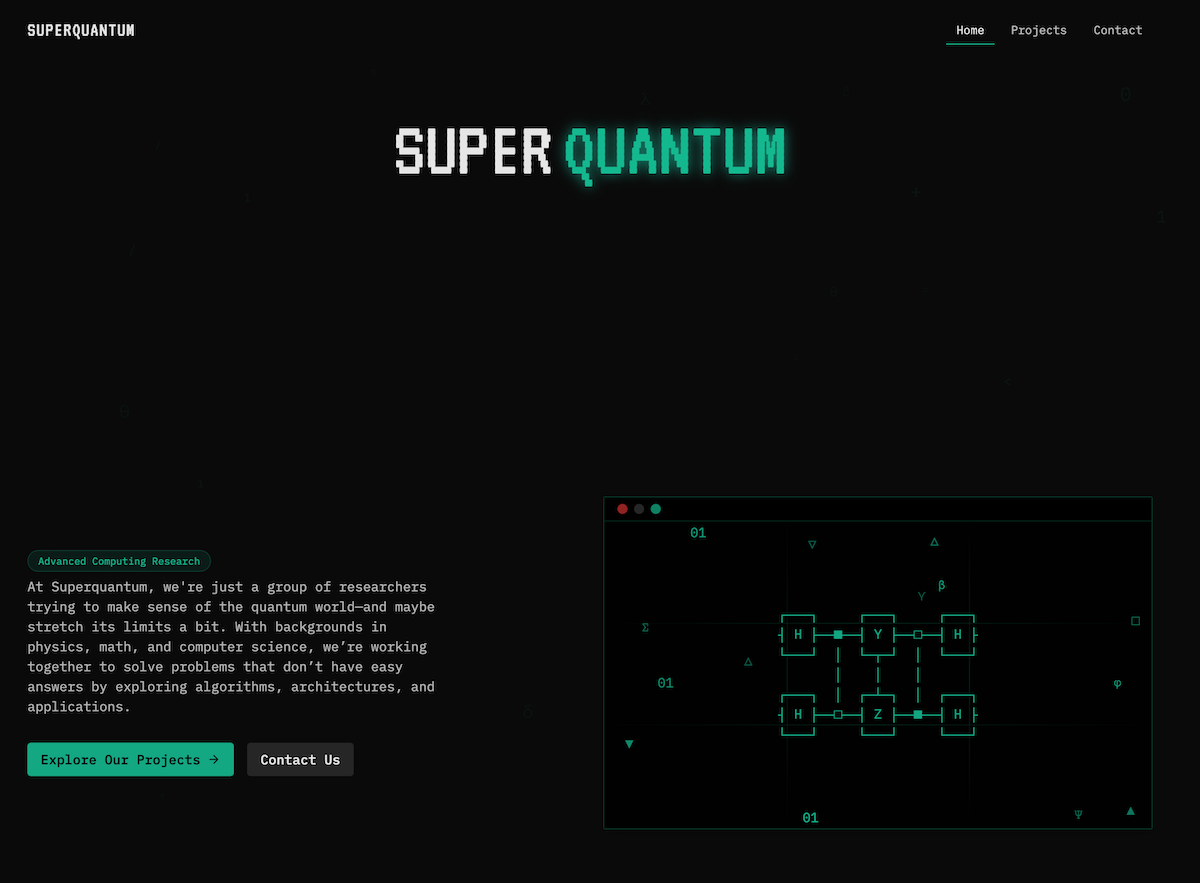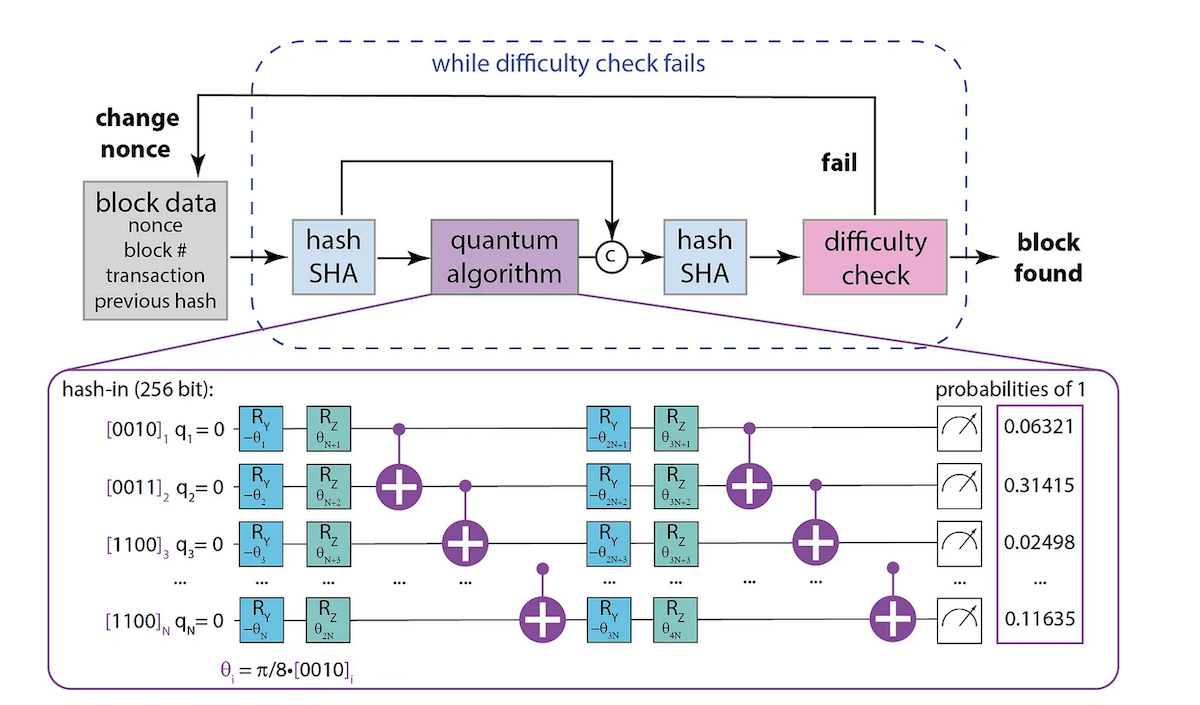 Qubitcoin (QTC) is a unique cryptocurrency that integrates blockchain with quantum computing through the Quantum Proof of Work (qPoW) algorithm. It has garnered attention from miners due to its high profitability and innovative concept. This guide will provide a detailed overview of Qubitcoin, explain how to set up mining on CPU and GPU, and offer tips for a successful start.
Qubitcoin (QTC) is a unique cryptocurrency that integrates blockchain with quantum computing through the Quantum Proof of Work (qPoW) algorithm. It has garnered attention from miners due to its high profitability and innovative concept. This guide will provide a detailed overview of Qubitcoin, explain how to set up mining on CPU and GPU, and offer tips for a successful start.
What is Qubitcoin?
Qubitcoin (QTC) is a cryptocurrency that utilizes the qPoW algorithm, which requires solving quantum tasks for mining. This approach supports the development of quantum simulators, making Qubitcoin not only a financial tool but also a platform for scientific computations. As of July 2025, the project has united over 700 participants and 3,000 GPUs, establishing it as the largest network for decentralized quantum computing.
Key Features of Qubitcoin:
- Algorithm: Quantum Proof of Work (qPoW).
- Blockchain: Independent, proprietary.
- Trading: QTC/USDT on the SafeTrade exchange.
- Wallet: Electrum, adapted for Qubitcoin.
- Profitability: ~$0.20 per 1 KH/s at a QTC price of approximately $4 (as of July 28, 2025).
Resources and Links:
Qubitcoin stands out for its low energy consumption (e.g., an RTX 4090 consumes ~240 W) and high profitability for early miners (at least at the time of writing).

Advantages of Qubitcoin Mining
- High Profitability: Early miners have seen significant profits due to the rising QTC price.
- Hardware Flexibility: Supports both CPU and GPU.
- Low Heat and Energy Consumption: Optimized for modern GPUs.
- Active Community: Support via Discord and GitHub documentation.
- Innovation: Contributes to the advancement of quantum technologies.
Preparing for Mining
Before starting to mine, you need to set up a wallet, prepare your system, and choose an appropriate mining method.
- Setting Up the Qubitcoin Wallet. To store and receive QTC, use the Electrum wallet. Download it from the official website. Install the program by following the instructions. Create a new wallet or restore an existing one, securely storing the seed phrase. Copy the wallet address for mining.
- System Requirements. OS: Ubuntu 20.04 or higher (Ubuntu 24 recommended). CPU: Multi-core processor (e.g., AMD Ryzen 5950X). GPU: Nvidia with CUDA support (RTX 4090 is optimal). GLIBC: Version 2.39+ (required for the official miner). Docker: Required for the Docker method. Internet: Stable connection.
- Checking GLIBC Version. To check the current GLIBC version, use the command: "ldd --version | head -n1". If the version is below 2.39, update GLIBC on Ubuntu (versions below 24) with the following command: "apt update && echo "deb http://archive.ubuntu.com/ubuntu noble main" >> /etc/apt/sources.list && apt update && apt install unzip g++ gcc g++-13 -y && apt install libc6 -y && sed -i '/deb http:\/\/archive.ubuntu.com\/ubuntu noble main/d' /etc/apt/sources.list && apt update".
Qubitcoin Mining Methods
There are three main methods for mining Qubitcoin, each with its own characteristics.
Method 1: Official Miner (Unoptimized - Low Hashrate)
This method is suitable for basic CPU or GPU mining but does not offer maximum performance.
- To download and run the miner, use the command: "wget https://superquantum.io/files/qubitcoin-miner && chmod +x qubitcoin-miner && ./qubitcoin-miner -a qhash -o ru.luckypool.io:8611 -u <WALLET>.<YOU_WORKER_NAME> -t <THREADS>"
- Replace <WALLET> with your Electrum wallet address and set <YOU_WORKER_NAME>.
- -t <THREADS>: Specify the number of CPU threads (e.g., -t 4 for 4 threads).
- Pros: Simple, no developer fee.
- Cons: Lower performance compared to other methods.
Method 2: Optimized CPU Miner (15% Developer Fee)
Developed by HenuZiO, this method is optimized for CPU and provides higher hashrates.
- To download and run the miner, use the command: "wget https://github.com/HenuZiO/qubitcoin-miner-cpu/releases/download/cpu-1.0.0/qubitcoin-miner-cpu.tar.gz && tar -xvf qubitcoin-miner-cpu.tar.gz && rm -rf qubitcoin-miner-cpu.tar.gz && ./qubitcoin-miner-cpu -a qhash -o ru.luckypool.io:8611 -u <WALLET>.<WORKER>"
- Replace <WALLET> with your wallet address and <WORKER> with a custom name (e.g., MY_RIG_1).
- Pros: High hashrate on CPU, suitable for systems without GPUs.
- Cons: 15% developer fee. Source: GitHub HenuZiO.
- Source: GitHub HenuZiO.
Method 3: Mining via Docker (20% Developer Fee)
Developed by vasyagun, this method uses Docker for GPU or combined CPU+GPU mining.
- GPU Mining: "wget https://raw.githubusercontent.com/vasyagun/qubitcoin/main/setup_docker_run.sh && chmod +x setup_docker_run.sh && ./setup_docker_run.sh <WALLET> qubitcoin.luckypool.io:8611"
- GPU+CPU Mining: "wget https://raw.githubusercontent.com/vasyagun/qubitcoin/main/setup_docker_run_CPU+GPU.sh && chmod +x setup_docker_run_CPU+GPU.sh && ./setup_docker_run_CPU+GPU.sh <WALLET> qubitcoin.luckypool.io:8611"
- Replace <WALLET> with your wallet address.
- Pros: High performance on GPUs, automated setup via Docker.
- Cons: 20% developer fee, requires Docker.
- Source: GitHub vasyagun.
Note: For an RTX 4090, profitability is ~$6 per day at a hashrate of 40 KH/s (as of July 27, 2025).
Additional Tips for Beginners
- Track the QTC price using LiveCoinWatch or the SafeTrade exchange.
- Monitor statistics via the blockchain explorer.
- For GPUs, use the latest Nvidia drivers and CUDA.
- For CPUs, configure the optimal number of threads (typically 70-80% of the total).
- The RTX 4090 consumes only ~240 W during QTC mining, making it an excellent option for summer mining to avoid overheating.
- Store the wallet seed phrase securely.
- Join the Discord community for support and updates.
Additional Information on the Quantum Proof of Work (qPoW) Algorithm
The concept of Quantum Proof of Work (qPoW) presents a unique opportunity: leveraging blockchain technology to accelerate quantum simulator development. This method combines peer-to-peer competition in blockchain with the capabilities of quantum computing, fostering progress in both fields.
The cryptocurrency mining ecosystem has already demonstrated its ability to drive rapid innovation in specialized hardware and software. For instance, Bitcoin mining evolved from CPU to GPU, then to FPGA, and finally to ASIC, achieving a 10-million-fold increase in computational efficiency: from 10 MH/s on CPUs to 100 TH/s on ASICs. This progress was driven by the economic incentives inherent in mining.
At its core, qPoW integrates a quantum computing task into the standard Hashcash proof-of-work algorithm. An early qPoW prototype was published in 2022 by Shalaginov and Dubrovsky.
The version discussed here involves a quantum task that consists of identifying the set of maximum states in a pseudorandom quantum circuit with parameterized single-qubit rotation gates. As miners solve these quantum puzzles, they contribute computational power to validate and enhance quantum algorithms.
The advantage of this system lies in its potential to create a large-scale, distributed network of competing quantum simulators. Every miner participating in a qPoW-based blockchain will need to use a quantum simulator to stay competitive. This will significantly increase the global aggregate power and complexity of quantum simulation capabilities. As miners improve their quantum simulators to excel in mining, they will push the boundaries of quantum algorithms and hardware. Mining competition will drive advancements in simulation accuracy, efficiency, and scalability. Moreover, qPoW could become a standard benchmark for comparing the performance of quantum hardware and simulators.

Conclusion
Qubitcoin is a promising cryptocurrency that combines financial rewards with contributions to quantum technology. With flexible mining options (CPU, GPU, Docker) and high profitability for early miners, QTC remains an attractive choice in July 2025. By following this guide, you can quickly set up mining and join the Superquantum community.
Subscribe to our Telegram channel to stay updated with exciting and useful information!









